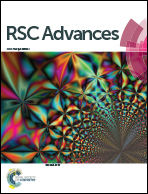A review of mechanisms for fluorescent ‘‘turn-on’’ probes to detect Al3+ ions
Abstract
The adverse effect of Al3+ ions on human health as well as the environment makes it desirable to develop sensitive and specific techniques for the detection of Al3+ ions. Detection methodology based on the fluorescence technique in combination with fluorescent chemosensors has shown its credibility attributed to its highly sensitive nature as well as to its applicability to the biological samples. Following a brief introduction to the principle of fluorescent sensors, various sensing methods which have been employed for the detection of Al3+ ions are explored. In addition, the outputs of various research groups from the last two years have been discussed. The objective of the present review is to highlight the recent progress in the field of fluorescent chemosensors related to Al3+ detection. The discussion comprises structural designing and mechanistic approaches used to develop selective fluorescent sensors for Al3+ ions. More emphasis has been given to describing the coordination modes and photophysical processes responsible for an effective detection process.


 Please wait while we load your content...
Please wait while we load your content...